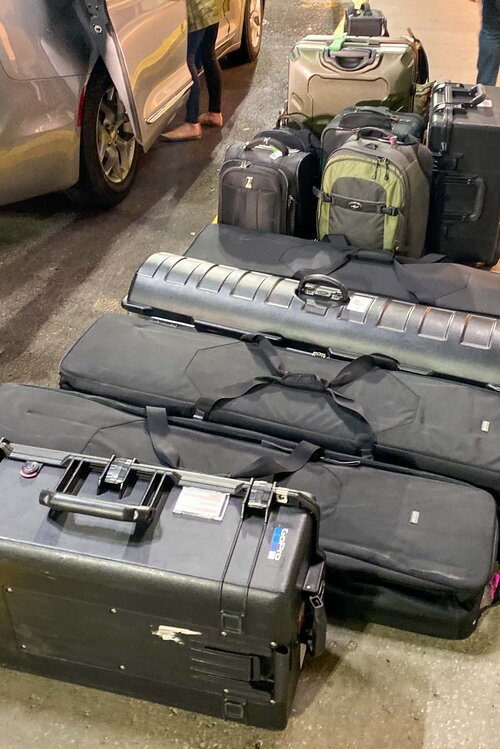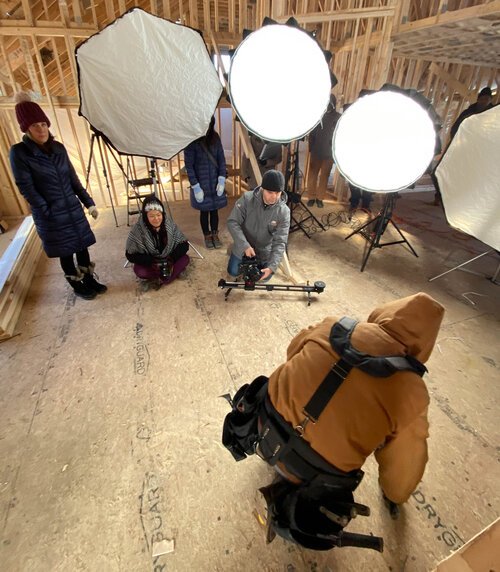What Makes a Superior Multimedia Assistant
The best advice I was given when becoming a professional photographer was not how to price my sessions or what to put on my website. It was to start assisting. While my ego’s stomach lurched at being in my mid-thirties and being an assistant again, I shook off that feeling. It was more important that I:
Learn how to run a creative business
Get comfortable with lighting setup (previously had only used natural light and speedlights)
Meet pros who had been doing this for years
See how a commercial multimedia production comes together.
When it came to finding assisting work, the first place I went to was a professional networking group. On a whim, I went to an ASMP Happy Hour in Providence, Rhode Island. I met a handful of seasoned photographers who I still consider my guides into the world of freelance and photography. I can attribute every job and referral I have had back to that day. Most importantly, this is where and when I connected with Scott, who gave the new girl a chance and took me under his wing as his multimedia assistant.
The Assistant Role Is Integral To A Successful Multimedia Production
I am almost two years into my new career, and when it comes to commercial shoots, my favorite role is being the assistant. I enjoy being a part of multimedia productions by helping them run smoothly. These productions include being on my feet running around all day and serving the crew by anticipating what the team needs before they know they need it. Assisting can mean many different things, but the main objective is that you are there to support the photographer and help the team get the content they were hired to create.
Every photo or video production is different, and your specific responsibilities will vary. However, good habits and work always apply. Here is my best advice for making a lasting impression and getting asked back.
Confirm what is expected of you: Ask the photographer what they need you to do on set. Do they need you to hold a reflector or light? Or do they want your input and suggestions? Know their work (look at their website and Instagram pages before the shoot) so that you can help them achieve the shoot’s vision.
Get to know their equipment: If you are assisting someone new, take 10 minutes at the start of the day, or if possible, beforehand to find out what equipment they use. Please familiarize yourself with what they call their gear, know what Pelican case has what in it, and take note (or a photo) of how they pack their bags. If you notice they’re careless with their gear, that doesn’t permit you to be rough with it. Always treat it better than your own.
Early is on time. On-time is late.: The crew call time for one of my first assisting jobs was 9 am so I planned to be there just a few minutes before 9 am. Bad idea. I hit traffic and arrived at 9:05 am. When I pulled into the parking lot, Scott already had the gear unloaded from the car, and the whole crew (including the client) was circled up ready to go. I was flustered going into it, which is not the ideal way to start a long day on set.
Whether you are driving, walking, biking, or taking the subway, your commute changes day-to-day. Do not solely rely on GPS time estimates or that it only took you 25 minutes to get to the same place last time. Plan to be at your shoots an hour before your call time. This gives you time to get lost, sit in extra bad traffic, go home to get something you forgot, or pick up coffee. If you happen to get to the location early then, you have time to find parking and take a nap, catch up on email, scroll mindlessly through Instagram, or call your mom.
Bring your own tool kit: I used to ask photographers if they needed me to bring anything, and generally, the answer is no. For the most part, they have and bring what they anticipate they’ll need. If you want to impress a photographer and be helpful, bring your own supplies. It’s validating when there is a problem you can solve with what you brought. Here are a few essential items that turn an assistant into a hero: sharpies, multi-tool, gaffers tape, binder clips, clamps, AA & AAA batteries, door stops, mints, pain relievers, hand mirror, a small flashlight, air blower, lens pen, sunscreen and a bag to keep these with you on set at all times. I use this BareBones “Harvest & Gathering” bag. It has a wide opening and option to be crossbody making the items in it quickly accessible without fumbling around.
Stay off your phone: Your job is to pay attention to what is happening. If the photographer is working, you are working too. The only exception is if you have been asked to take behind-the-scenes videos and photos for their marketing.
Behind-the-Scenes: Being on set is fun and makes for a really interesting Instagram story. Before you post anything from the set, ask permission because it changes production-to-production and client-to-client. Clients are sensitive about their products, deals, and content leaking out before they’re ready for the world. I take much behind-the-scenes content on set, but only after confirming it’s allowed.
Wear a watch: Assistants are often the timekeepers on set. Get a watch to check the time, so you do not have to look at your phone and risk getting distracted by a message or notification.
Snack and Water: Keep snacks and water handy for you and your photographer: Photographers and videographers often lose track of time on set and forget to eat. Before you know it, they’re losing focus, are looking a little wobbly or, the worst, getting cranky. Carry snacks on you and offer them to the photographer when you see the slump coming. Make sure you eat and drink plenty of water too!
Be on your feet and think on your feet: Always be alert. This means if your photographer is standing and working, you don’t want to be caught lounging at the craft services table. You want to be one step ahead of the photographer at all times. If a light stand is about to fall over, you better be there to catch it. Other suggestions: getting the gear set up as soon as you get on set (confirm what is needed first), asking if you can break down equipment before they ask you to do it, grabbing a light stand out of a shot, turning off lights during breaks or having the right lens options on you so they do not lose time.
While we’re all in this COVID-19 slow down, you may think it’s hard to build up assisting connections. Take this time to reach out to photographers and videographers whose work you admire and would like to assist. Reach out to other assistants you know and ask to swap referrals. Contact those whom you have assisted in the past and check in on them.. Once work picks back up again, you will be top of mind!




